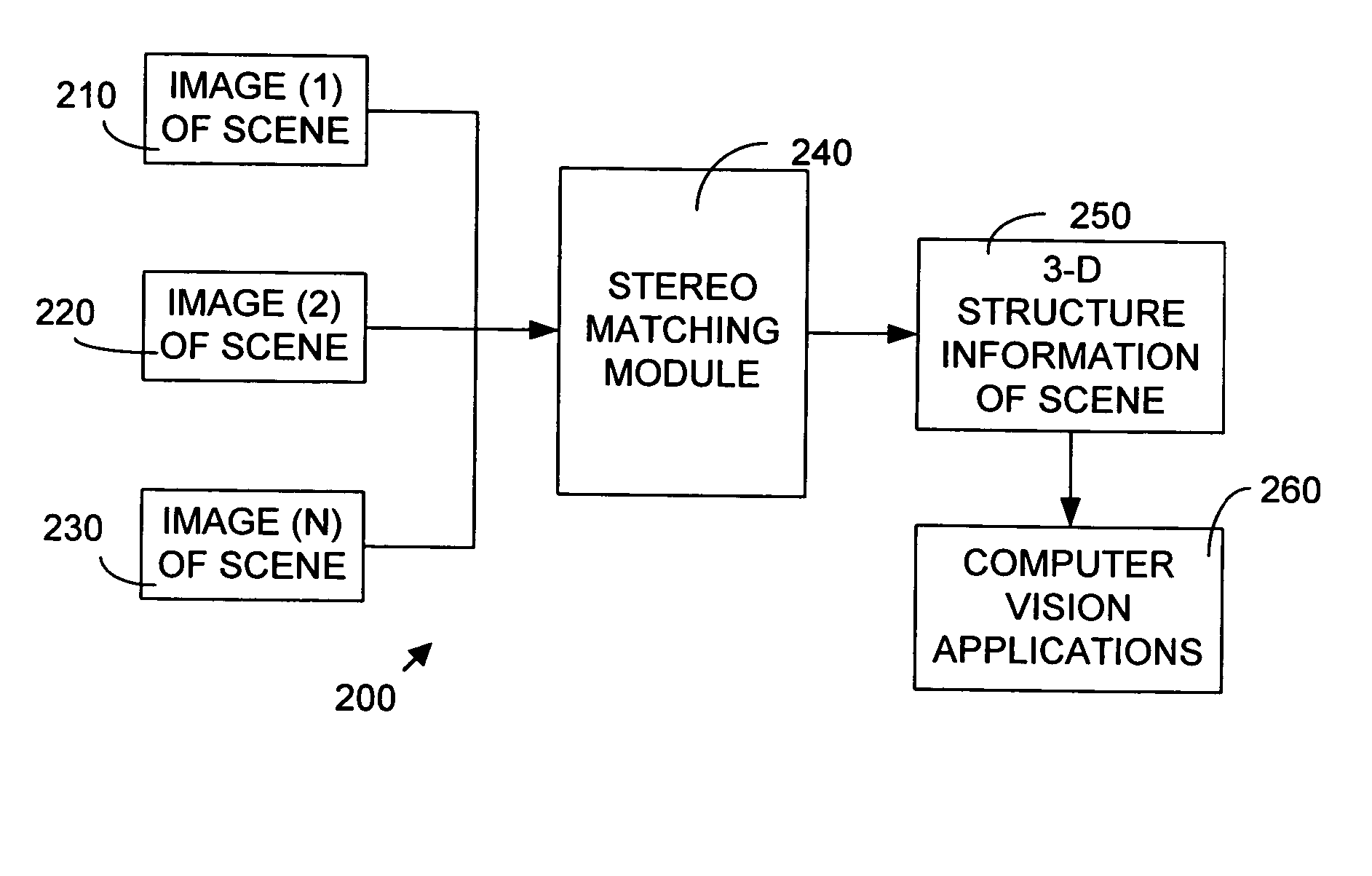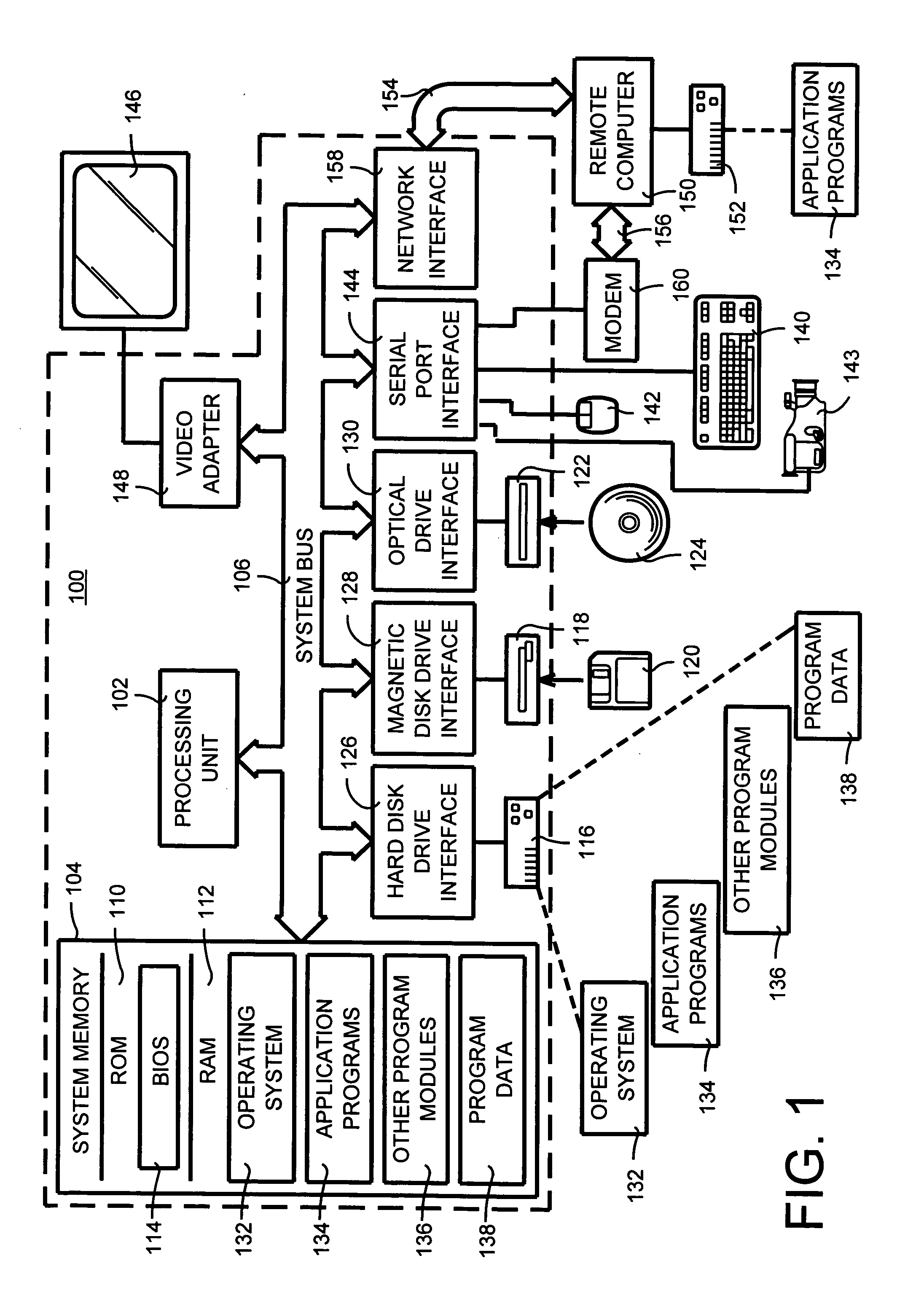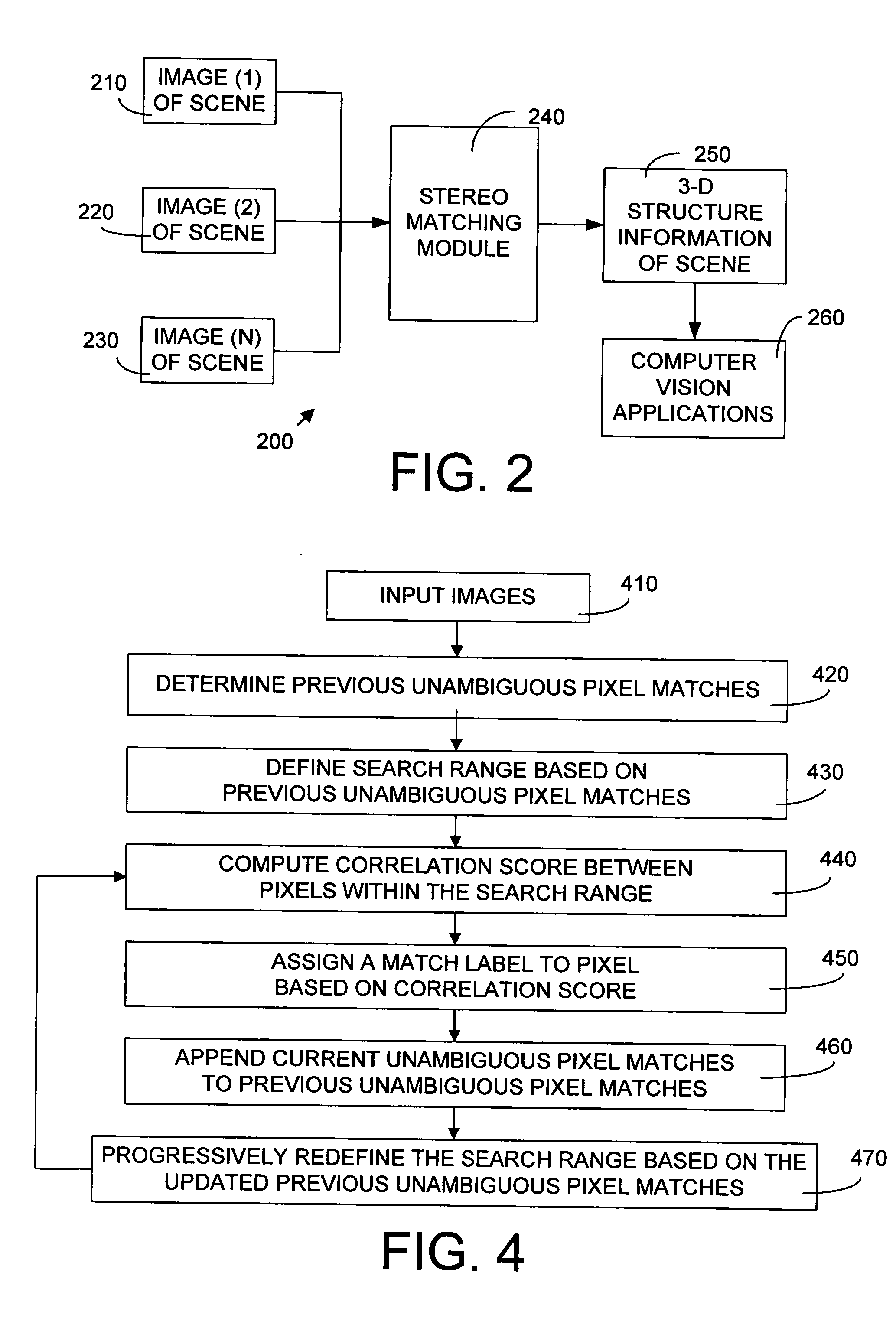System and method for progressive stereo matching of digital images
a digital image and stereo matching technology, applied in image data processing, image enhancement, instruments, etc., can solve the problems of small subset of image pixels used to match features, coarse and inaccurate 3-d representation of the actual scene, and unreliable matching at occlusion boundaries and within featureless regions of images. , to achieve the effect of reducing false matches and reliable and efficient determination
- Summary
- Abstract
- Description
- Claims
- Application Information
AI Technical Summary
Benefits of technology
Problems solved by technology
Method used
Image
Examples
working example and exemplary implementation
VI. Working Example and Exemplary Implementation
[0063]FIG. 8 is a working example of FIG. 4 whereby stereo matching of images representing a scene is performed in accordance with the present invention. In this working example, a left image 800 and a right image 810 of a scene are input images of the scene (box 820). Points within the left and right images 800, 810 are matched (box 830) using the stereo matching module 240 of FIG. 2. Matched points represent a 3-D point in space and are used to determine 3-D structure information of a scene (box 840), which, for example, may be used to perform a 3-D scene reconstruction.
[0064] An exemplary implementation of the working example of FIG. 8 will now be discussed. In this exemplary implementation, the present invention is formulated within a Bayesian inference framework. Bayesian inference, which is well-known to those skilled in the art, is discussed in detail by D.S. Sivia in “Data Analysis: a Bayesian tutorial” (Oxford University Pres...
PUM
 Login to View More
Login to View More Abstract
Description
Claims
Application Information
 Login to View More
Login to View More - R&D
- Intellectual Property
- Life Sciences
- Materials
- Tech Scout
- Unparalleled Data Quality
- Higher Quality Content
- 60% Fewer Hallucinations
Browse by: Latest US Patents, China's latest patents, Technical Efficacy Thesaurus, Application Domain, Technology Topic, Popular Technical Reports.
© 2025 PatSnap. All rights reserved.Legal|Privacy policy|Modern Slavery Act Transparency Statement|Sitemap|About US| Contact US: help@patsnap.com



